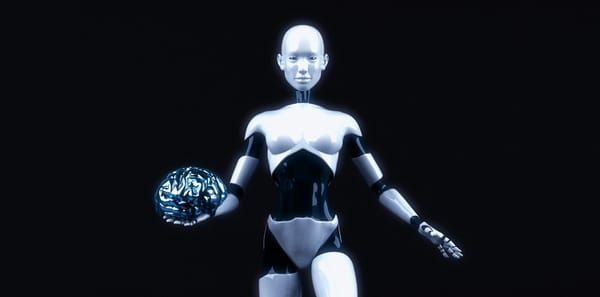Boost Your Hiring with AI-Powered Job Descriptions
In today’s market, businesses have to face a ton of challenges. The hiring process isn’t as simple as it used to be, and every day, it keeps changing. A series of challenges like talent shortage, high-level competition, skill mismatch, inclusion efforts, the rise of remote work, the evolution of roles, and many more mark this evolving industry phase. All these challenges force businesses to embrace new approaches in their hiring efforts. These approaches need to combine innovation and data-driven insights and provide candidates with the best experience possible. Acting proactively in such situations leads to a competitive advantage in the hiring market and helps businesses build a productive workforce that consists of top talent.
Why Job Descriptions are Key in Recruitment
The role of job descriptions in the modern recruitment process is very important. Job descriptions are the key to overcoming all the challenges that businesses are facing due to the continuously transforming organizational landscape.
Effective job descriptions are vital for staffing a business with the right position in every role. Through them, businesses can attract top-talented candidates and candidates with diverse backgrounds and foster a productive workforce.
Bringing AI into Job Descriptions
The innovative call for action that businesses need to thrive in the ever-changing organizational world is the embrace of AI’s powers in job descriptions. With a tool like AI, businesses are able to craft smart job descriptions quickly and effectively.
In difference from the traditional method of crafting job descriptions, AI-crafted job descriptions are on another level, far ahead. Traditional job descriptions have a lot of limitations that hinder the whole recruitment process. They require a lot of time to write, and most of the time, they include unconscious biased language. Moreover, they fail to effectively showcase the significance of a role and the opportunities for development that the role offers.
On the other hand, AI-generated job descriptions overcome these limitations and give businesses results that benefit both them and the candidates. Their language model makes sure that any biased language is eradicated and effectively captures the interest of candidates with diverse backgrounds. Nonetheless, the time needed for generating these job descriptions is reduced to only seconds, while the extensive AI database ensures that the latest industry trends on skills and qualifications, as well as responsibilities, are successfully mentioned.
How AI Gives Your Job Descriptions an Edge
Let’s analyze further all the benefits that the secret ingredient named AI can bring to your job descriptions:
· Inclusive Language: As we said before, AI’s language model acts as a guardian of inclusivity. Every job description crafted by AI has a writing style that is inclusive and attracts candidates with diverse backgrounds, allowing businesses to foster an inclusive workforce.
· Usage of Keywords: Again, the style of writing that AI is using ensures the usage of keywords and keyphrases relevant to the role being described that help the job postings generate more traffic and visibility in search engines. This way, businesses can attract a wider pool of candidates and increase the chances of finding a perfectly fit one for the role.
· Data-Driven Insights: AI draws insights from a vast database. In terms of crafting job descriptions, AI leverages those insights, and as a result, job descriptions are up-to-date with the latest and most accurate skills and qualifications needed for every role.
· Improved Engagement: AI-generated job descriptions never fail to accurately inform candidates of what there’s to gain from the role described. Such accuracy in informing leads to higher levels of candidate engagement.
· Time-Saving: Handwritten job descriptions are very time-consuming. AI-powered tools can craft job descriptions in just seconds and allow HR professionals to focus on other things, such as the business’s strategic tasks.
These are some of the top benefits that AI brings to the job descriptions. Its powers are countless, and its self-improving capabilities make sure that it is always up-to-date and even more efficient with the passage of time.
AI and Candidate Experience: A New Approach
As we said before, AI in recruitment doesn’t only benefit businesses but candidates, too. The next-level job descriptions that AI can craft present every role with great effectiveness, and their style ensures visibility to candidates on the market looking for a job.
AI-generated job descriptions and their power to successfully analyze every role’s requirement efficiently present every detail needed for a candidate to fully understand it. It showcases not just the skills and qualifications needed for the role but also the soft skills and business culture. It is very important for a business to show the potential candidates all the growth opportunities that they offer. All of these are done in a style that ensures candidate engagement and raises the attraction level, enabling businesses to build a top-talented workforce that will be highly productive and thrive.
Implementing AI in Your Hiring: A How-to Guide
Such a transformation may seem scary for everyone, but it is not. Implementing AI into your recruitment process shouldn’t scare you at all. Of course, a course of action is needed to successfully and effectively embrace its powers, but it’s very simple. Here are some steps that will help businesses effectively leverage AI’s powers in their hiring procedures:
1. Understanding Your Needs: For starters, businesses need to understand their needs. This means that businesses have to identify what they want from recruiting. What does that mean? Simple. You may want to build an inclusive workforce, fill vacant positions, recruit talented employees, etc.
2. Research Your Options: Look for every AI-powered tool on the market. Shortlist your options and note every feature that they have to offer.
3. Select the Right Tool: Once you have found available AI tools, it’s time to choose the most suitable one for your business. Make sure that the one you choose is compatible with your existing systems, is user-friendly, and, of course, fits your business plan.
4. Train Your Employees: Every business has to effectively train their employees. It is crucial to help them understand that AI tools are here to help them with their jobs and not to replace them. Not only this, they have to familiarize themselves with its usage and make the most of it.
5. Monitor Its Progress: Another important step in successfully implementing AI into your hiring process. You should monitor the job descriptions crafted by the AI so you can make improvements if needed.
By following these steps, you are guaranteed to effectively embrace AI’s powers for your recruitment process. It is important to keep tracking AI’s results and make any adjustments needed to get the best result from this powerful tool.
Businesses should jump right away into this transforming phase that currently reshapes the industrial landscape. Staying behind in this race will result in seeing your business left behind, so don’t waste time and leverage AI powers to step up your recruitment game.




